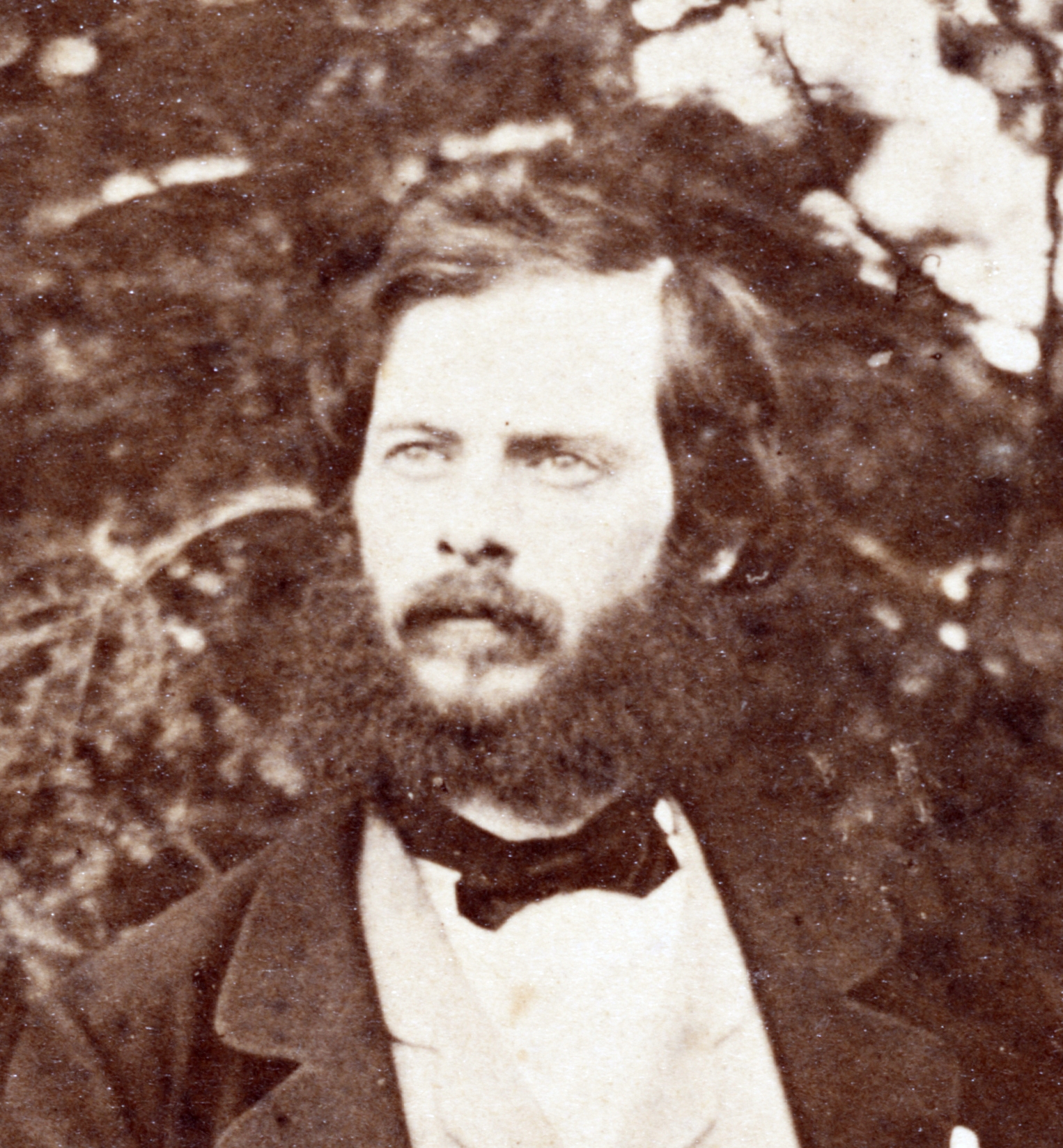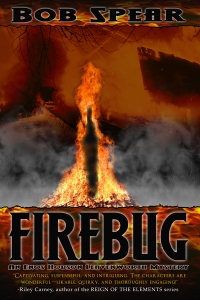This post, from Anna Miller, originally appeared on the Online Degree site and is reprinted here in its entirety with her permission.
The old cliché states that artists and writers never achieve true fame or appreciation for their creative output until after their death. While the advent of bestselling authors who peddle their wares on television, radio, and other media outlets, the seductive cult of celebrity has begun trickling its way into the literary world at a much faster pace than yesteryear. But the following writers never had a chance to see the greater influence and love that their painstaking, passionate work earned due to dying before receiving recognition. Some, of course, never actively sought critical or academic renown for their novels, short stories, essays, or poems – though their intentions do not exclude them from proving the old adage true.
1. John Kennedy Toole
 Following his disheartening 1969 suicide, John Kennedy Toole would go on to leave a permanent mark on the American literary landscape with his hilarious and heartbreaking A Confederacy of Dunces. His route towards history is indelibly marked by tragedy and well-known to anyone familiar with the brilliant novel and its lesser-known companion The Neon Bible. Toole’s mother Thelma brought the found manuscripts to Loyola University New Orleans professor Walker Percy in 1976. Initially skeptical of her claims that her son was a phenomenal writer, Percy found himself surprisingly bowled over by the grotesquely entertaining Ignatius Reilly and Toole’s pitch-perfect depiction of life in New Orleans and rallied to find a publisher for A Confederacy of Dunces. Louisiana State University agreed, and in 1980 Toole went on to win a posthumous Pulitzer Prize for the novel. Today, it remains a much-beloved work of American literature with a healthy and continuous following – studied frequently in high school and college-level English classes across the United States and subjected to many painstaking dissections by scholars and academics.
Following his disheartening 1969 suicide, John Kennedy Toole would go on to leave a permanent mark on the American literary landscape with his hilarious and heartbreaking A Confederacy of Dunces. His route towards history is indelibly marked by tragedy and well-known to anyone familiar with the brilliant novel and its lesser-known companion The Neon Bible. Toole’s mother Thelma brought the found manuscripts to Loyola University New Orleans professor Walker Percy in 1976. Initially skeptical of her claims that her son was a phenomenal writer, Percy found himself surprisingly bowled over by the grotesquely entertaining Ignatius Reilly and Toole’s pitch-perfect depiction of life in New Orleans and rallied to find a publisher for A Confederacy of Dunces. Louisiana State University agreed, and in 1980 Toole went on to win a posthumous Pulitzer Prize for the novel. Today, it remains a much-beloved work of American literature with a healthy and continuous following – studied frequently in high school and college-level English classes across the United States and subjected to many painstaking dissections by scholars and academics.
2. Franz Kafka
 Today considered one of the quintessential existential (and, to a lesser extent, modernist) writers, many unfamiliar with Austrian writer Franz Kafka’s life will be shocked to discover that his intensive influence never coagulated until after his 1924 death from tuberculosis. Kafka actually spent much of his short life working in insurance and factories with the occasional dabbling in theatre. Most of his dark, deeply psychological short stories, novels, novellas, letters, and essays never saw publication in his lifetime – in fact, he ordered his contemporary Max Brod, the executor of his estate, to burn every manuscript without reading them. Obviously, Brod disobeyed these last requests. As a result, Kafka’s descriptive exploration of the more twisted, unknown corners of the human psyche entered into the literary canon. Loved and appreciated throughout the world, critics laud works such as The Metamorphosis, The Trial, The Metamorphosis, and many, many others as some of the greatest literary contributions from the 20th century. They have gone on to heavily inspire not only other writers, but artists, musicians, and other creative types as well.
Today considered one of the quintessential existential (and, to a lesser extent, modernist) writers, many unfamiliar with Austrian writer Franz Kafka’s life will be shocked to discover that his intensive influence never coagulated until after his 1924 death from tuberculosis. Kafka actually spent much of his short life working in insurance and factories with the occasional dabbling in theatre. Most of his dark, deeply psychological short stories, novels, novellas, letters, and essays never saw publication in his lifetime – in fact, he ordered his contemporary Max Brod, the executor of his estate, to burn every manuscript without reading them. Obviously, Brod disobeyed these last requests. As a result, Kafka’s descriptive exploration of the more twisted, unknown corners of the human psyche entered into the literary canon. Loved and appreciated throughout the world, critics laud works such as The Metamorphosis, The Trial, The Metamorphosis, and many, many others as some of the greatest literary contributions from the 20th century. They have gone on to heavily inspire not only other writers, but artists, musicians, and other creative types as well.
3. Henry Darger
 A curious figure, Henry Darger enjoyed acclaim as an outsider artist and writer after Nathan and Kiyoko Lerner, his landlords, discovered the massive cache of pen and pencil drawings, watercolors, collages, and manuscripts he left behind. After moving into a Lincoln Park, Chicago apartment in 1930, he remained there until his death in 1973. Darger worked menial labor jobs in a hospital before retiring in 1963, and lived an exceptionally solitary existence revolving around attending mass and collecting discarded magazines, newspapers, and books that served as references for his art and inspirations for his stories. Growing up in a traumatic Catholic mission house after his mother’s death forced his being given up for adoption, Darger channeled many of the anxieties and frustrations he experienced into 3 gigantic literary works and a couple of smaller ones. The preservation of innocence and protection of abused children stood as the main themes of his entire creative output, with the seminal 15,145-page The Story of the Vivian Girls, in What is known as the Realms of the Unreal, of the Glandeco-Angelinnian War Storm, Caused by the Child Slave Rebellion as the most visible and popular example. He kept several diaries, some of them about the daily weather, and also penned The History of My Life (a 5,084-page autobiography) and the 10,000-page Crazy House.
A curious figure, Henry Darger enjoyed acclaim as an outsider artist and writer after Nathan and Kiyoko Lerner, his landlords, discovered the massive cache of pen and pencil drawings, watercolors, collages, and manuscripts he left behind. After moving into a Lincoln Park, Chicago apartment in 1930, he remained there until his death in 1973. Darger worked menial labor jobs in a hospital before retiring in 1963, and lived an exceptionally solitary existence revolving around attending mass and collecting discarded magazines, newspapers, and books that served as references for his art and inspirations for his stories. Growing up in a traumatic Catholic mission house after his mother’s death forced his being given up for adoption, Darger channeled many of the anxieties and frustrations he experienced into 3 gigantic literary works and a couple of smaller ones. The preservation of innocence and protection of abused children stood as the main themes of his entire creative output, with the seminal 15,145-page The Story of the Vivian Girls, in What is known as the Realms of the Unreal, of the Glandeco-Angelinnian War Storm, Caused by the Child Slave Rebellion as the most visible and popular example. He kept several diaries, some of them about the daily weather, and also penned The History of My Life (a 5,084-page autobiography) and the 10,000-page Crazy House.
4. Emily Dickinson
Like many beloved writers before her and many after, Emily Dickinson spent much of her adult life living like a hermit and was dismissed as a mere eccentric until shortly after her nephritis-related death in 1886. She attended Amherst Academy and studied literature, math, Latin, the sciences, and other disciplines and counted William Wordsworth and Ralph Waldo Emerson amongst her many influences. Keeping to herself, most of her family and peers knew her as a passionate gardener while in private she penned some most unorthodox poetry at the time. Only a small handful of her almost 1800 poems were published during her lifetime, and her sister Lavinia burned a few of her posthumous leavings upon request – mostly letters. However, Dickinson failed to leave behind instructions for some of her notebooks, and as a result her first volume of poetry hit the shelves in 1890 with the help of supporters Thomas Wentworth Higginson and Mabel Loomis Todd. Critics received it with a largely mixed response, though later scholars would come to heap praise upon her experimentations in slant rhyming and unconventional punctuation and capitalization.
5. Sylvia Plath
Sylvia Plath did, in fact, find a modicum of literary recognition in her lifetime before committing grisly suicide in 1963. In 1955, she even won the Glascock Prize for “Two Lovers and a Beachcomber by the Sea.” Following her graduation from Smith College, she guest edited at Mademoiselle magazine to much disappointment – an experience that inspired her celebrated semi-autobiographical novel The Bell Jar – and published the occasional poem in the Cambridge University newspaper Varsity. Plath struggled with mental illness all her life, finding solace in her confessional works that discussed her overwhelming emotions with raw, open honesty. However, this intimate peek into her tumultuous inner life gained far more momentum after her death, with 4 children’s books, 6 works of fictitious and nonfictitious prose (including diaries), and at least 7 volumes of poetry attributed to her name after 1963. Prior to that, she had released The Colossus and Other Poems to a small but largely positive critical base that would later come to prefer her posthumous works. She even won the first posthumous Pulitzer Prize for poetry for 1981’s The Collected Poems. It was the publication of The Bell Jar that fully solidified her place in the American literary pantheon, though. Written under the pen name “Victoria Lucas,” it had been accepted for publication and hit the shelves one month before Plath’s suicide – meaning she never had a chance to actually enjoy the subsequent adulation.
6. Jane Austen
Considering contemporary media’s nigh-obsession with all things Jane Austen – a disconcerting many of them jettisoning the truly biting Regency satire in favor of focusing on the more profitable romances – it comes a shock to many that she never garnered hefty amounts of popularity in her lifetime. Austen did, in fact, publish several of her most beloved novels (Sense and Sensibility in 1811, Pride and Prejudice in 1813, Mansfield Park in 1814, and Emma in 1815) prior to her 1817 death from a disputed disease. Many literary critics and intellectuals spoke well of her spunky parodies of English society, though others criticized the novels for their failure to adhere to Romantic and Victorian philosophies and literary protocol. While never huge, they enjoyed a steady stream of moderate success, and her comprehensive Juvenilia series sent her family rollicking with its cheeky, anarchic humor. In spite of all this, however, Austen remained almost an entire unknown entity until after her death…when her brother Henry revealed in the biographical notes of the posthumously published Northanger Abbey and Persuasion (both in 1817) that she spent her entire literary career writing anonymously.
7. James Agee
Known during his lifetime as a moderately successful literary critic and co-screenwriter for the classic films The African Queen in 1951 and The Night of the Hunter in 1955, James Agee’s alcoholism frequently prevented him from ever achieving fame equal to his talents. A lifelong writer, he wrote for Fortune, Life, The Nation, and Time (he also served as a movie critic for the latter 2), published a volume of poetry (Permit Me Voyage), and released a largely ignored novel (Let Us Now Praise Famous Men) prior to his death by heart attack in 1995. Agee’s most celebrated and studied work, the autobiographical novel A Death in the Family, saw publication 2 years later and earned him a posthumous Pulitzer Prize in fiction in 1958. Afterwards, interest in his oeuvre skyrocketed and eventually earned him a place as one of the most respected American writers of the 20th century.
8. Nathanael West
As with many who worked as screenwriters in the 1930’s, Nathanael West never enjoyed great success for his literary prowess. Prior to his fatal car accident in 1940, West released 12 screenplays (and 1 remaining unproduced), 2 short stories, and 4 novels all while participating in a few writers’ seminars with the likes of Dashiell Hammett and William Carlos Williams. Most of his works – including the celebrated Miss Lonelyhearts (1933) and The Day of the Locust (1939) – drew from his experiences in the tarnished, writhing underbelly of the supposedly glamorous and idealistic Hollywood. It took his sudden and unexpected death to launch any real interest in West’s output, and the 1957 re-release of his collected novels only solidified his popularity. To this day, many regard The Day of the Locust as the quintessential Hollywood satire, offering a portrait into the shady wheelings and dealings of producers, actors, and other movie professionals vying for stardom and glory.
9. Anne Frank
The tragic story of Annelies Frank needs very little introduction. Fans of history and literature alike need to read the young girl’s diary, which she kept from June 12, 1942 until three days her capture by the Nazis on August 4, 1944. Frank died in Bergen-Belsen Concentration Camp in 1945 at the age of 15 as one of the 6 million completely unnecessary Jewish murders during the Holocaust. Miep Gies, one of the women responsible for hiding Frank’s family from the Third Reich, handed her father Otto the famous account. He sought a publisher for it as a means of educating the populace on Hitler’s atrocities, and came to find a valuable ally in historian Annie Romein-Verschoor and her husband Jan Romein. The Diary of a Young Girl was first published in 1947 in The Netherlands, with much of Europe and the United States following shortly thereafter. Critics enjoyed the book as both a harrowing glimpse into life as a hated minority in Hitler’s Germany and as a well-written piece of literature in its own right. Though a teenager, Frank’s experiences granted her work a maturity beyond her years that paradoxically never tarnishes her childlike perceptions of the chaotic world. The result is an entirely necessary entry into the literary canon – a work that absolutely needs reading if humanity ever hopes to quell the possibility of another fascist genocide.
10. Theodore Winthrop
 Better known as a Civil War soldier and one of the first Union fatalities, Theodore Winthrop made a name for himself as a Yale-educated lawyer and seasoned world traveler before enlisting in 1861. He published a few articles, short stories, sketches, and essays but garnered little attention beyond the popular, patriotic “Our March to Washington.” Only after his death at the Battle of Big Bethel shortly after entering the army did anyone pay much attention to Winthrop’s writings. His sister, Laura Winthrop Johnson, was responsible for compiling all of his poetry and prose for submission and an eventual collection. At least 5 of his novels hit the shelves posthumously, many of them drawing from his generous academic and travel experiences. However, it was his Cecil Dreeme that garnered the most attention. Challenging and progressive, he turned traditional perceptions of social, gender, and racial roles upside-down using New York University as his backdrop.
Better known as a Civil War soldier and one of the first Union fatalities, Theodore Winthrop made a name for himself as a Yale-educated lawyer and seasoned world traveler before enlisting in 1861. He published a few articles, short stories, sketches, and essays but garnered little attention beyond the popular, patriotic “Our March to Washington.” Only after his death at the Battle of Big Bethel shortly after entering the army did anyone pay much attention to Winthrop’s writings. His sister, Laura Winthrop Johnson, was responsible for compiling all of his poetry and prose for submission and an eventual collection. At least 5 of his novels hit the shelves posthumously, many of them drawing from his generous academic and travel experiences. However, it was his Cecil Dreeme that garnered the most attention. Challenging and progressive, he turned traditional perceptions of social, gender, and racial roles upside-down using New York University as his backdrop.
No matter their ideology, style, or motivations for writing in the first place, these talented men and women left their undisputed legacy on the literary scene only after passing on. They obtained the level of fame that inadequate, trend-chasing copycats or celebrity-worshipping predecessors and successors only dream about, molding and shaping the written word with oeuvres that far outlived the limitations of human flesh.












